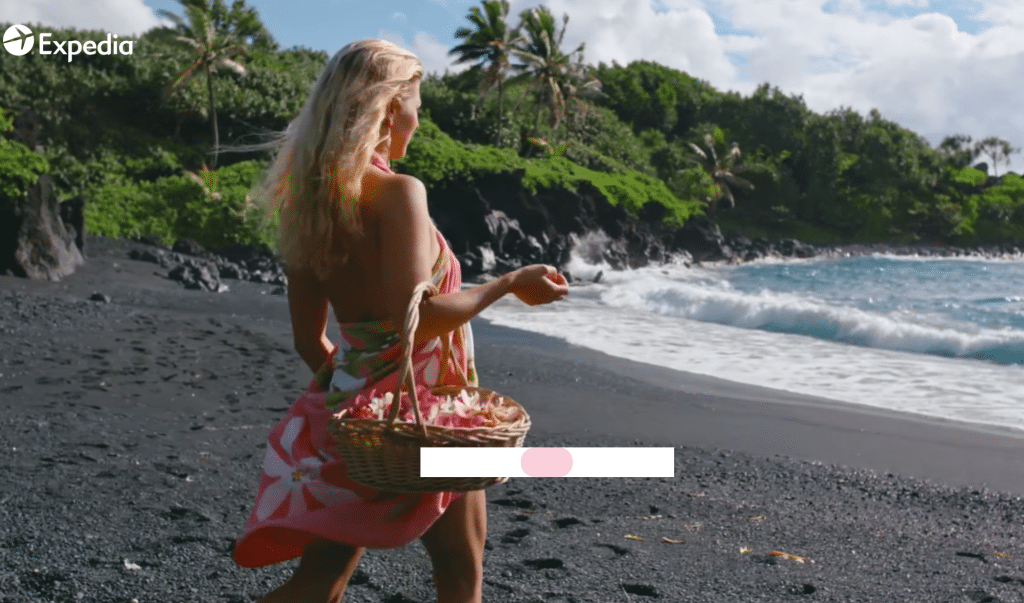Hawaii Has Launched a Facial Recognition Marketing Campaign to Help Travelers Plan Trips
SKIFT TAKE
Many travelers are generally more open to using new technology than other groups. But the pay-off has to be clear and transparency is paramount for a campaign like this to work.
Do travelers want to let brands analyze their facial expressions while watching videos of skydiving excursions or jungle treks through Maui?
That’s the big question the Hawaii Tourism Authority and Expedia Media Solutions are trying to answer as it introduces itsDiscover Your Aloha campaign this week. The campaign, created by Expedia Media Solutions, shows travelers a video of drone footage of the Hawaiian Islands and lets them watch the video with or without facial recognition software. If travelers choose to use facial recognition, the technology uses their webcams to analyze any expressions they make while watching the video (watch the video below).
After watching the two-minute video, travelers answer a few questions about the content, such as how they liked the scene of discovering Hawaii from a helicopter and can choose “I loved it!” or “Not for me!”
Based on their answers travelers are given an animal guide, such as a bird or a pig, that represents the kind of activities they’d be interested in doing during a trip to Hawaii. The campaign serves up some suggestions and gives the option of booking a trip through an Expedia site such as Expedia.com or Hotels.com. “It’ll be interesting to see if people even choose to use the facial recognition and take it on,” said Noah Tratt, senior global vice president of Expedia Media Solutions.
Tratt said Expedia Media Solutions isn’t storing data from the campaign, such as how a traveler reacts to a video, but said down the road that may be approached differently. “This is the first time Expedia Media Solutions has used facial recognition in a campaign and we think it’s cool. But because it’s never been done before that’s why it’s an open question.”
Hawaii Tourism Authority and Expedia Media Solutions will both market the year-long campaign on their social platforms but the campaign lives on a microsite under the Expedia Media Solutions domain. Display ads featuring the campaign appear across Expedia, Hotels.com, Orbitz, Travelocity and Wotif. It targets Hawaii’s largest visitor markets — continental U.S. states, Canada, Japan, Australia and New Zealand.
This is one of the first examples of a travel brand using facial recognition software in a marketing campaign but it’s already hit a major obstacle.
Namely, privacy rights. Apple, for example, prevents any facial recognition technologies from working in a browser on iOS devices such as the iPhone. Travelers can still watch the video on their iPhones or iPads but if they want to use facial recognition they’ll need to migrate to desktop.
For iOS users or anyone who doesn’t allow their device camera to use the facial recognition technology the campaign generates a quiz to help personalize travel recommendations. “I’ve learned that there is a lot of concern over privacy and I didn’t realize that before,” said Leslie Dance, vice president of marketing and product development for the Hawaii Tourism Authority.
Dance said the campaign is targeting millennials, a growing visitor demographic for Hawaii. “I also saw that millennials seem to not worry about that so much about facial recognition,” said Dance. “Hawaii is very solid with baby boomers but we need to think about the travelers of tomorrow and these kinds of things help us get going in that direction.”
CAN FACIAL RECOGNITION WORK?
The videos capture beautiful imagery and experiences unique to the Hawaiian Islands but the facial recognition component will likely confuse some travelers.
And as Tratt pointed out many travelers could be deterred from using the technology because they don’t understand how it works or how it will help them.
There is nothing particularly funny or sad about the video. In other words, nothing that would cause someone to laugh, frown or cry while watching, at least in our opinion. We only blinked throughout the video and a screenshot below shows that. The white field in the center of the screen brightens each time travelers move their face or blink. The facial recognition technology isn’t invisible to travelers while they’re watching as they can see what their faces are doing and that could be distracting.

What if someone doesn’t make any facial expressions throughout the video or smiles through every scene? “I personally smiled through the whole video, so how is that going to work?” said Tratt. “Is the degree of smiling on your face going to be nuanced enough to put you in the right category? We know from past research that when people know that they’re being watched that they tend to be more expressive so that actually helps the algorithms be more accurate.”
After we watched the video it wasn’t clear how the facial recognition had helped us. We still had to answer questions and then were shown our suggested Hawaii itinerary based on our answers to those questions. If our facial expressions did factor into that itinerary it wasn’t clear how or why. The suggestions we received, while exciting, didn’t seem personalized to us.
Working through the kinks and gauging how receptive travelers are to facial recognition, along with increasing awareness for Hawaii in key visitor markets, is the main goal of the campaign more so than measuring how many smiles or frowns travelers make, at least for now. “July was our best July ever in Hawaii and it’s been a great five years for us,” said Dance. “But we can’t just be happy with that. We’re constantly pushing ourselves to innovate and want to introduce Hawaii to what we call the ‘never beens,’ or those who have never visited us.”


